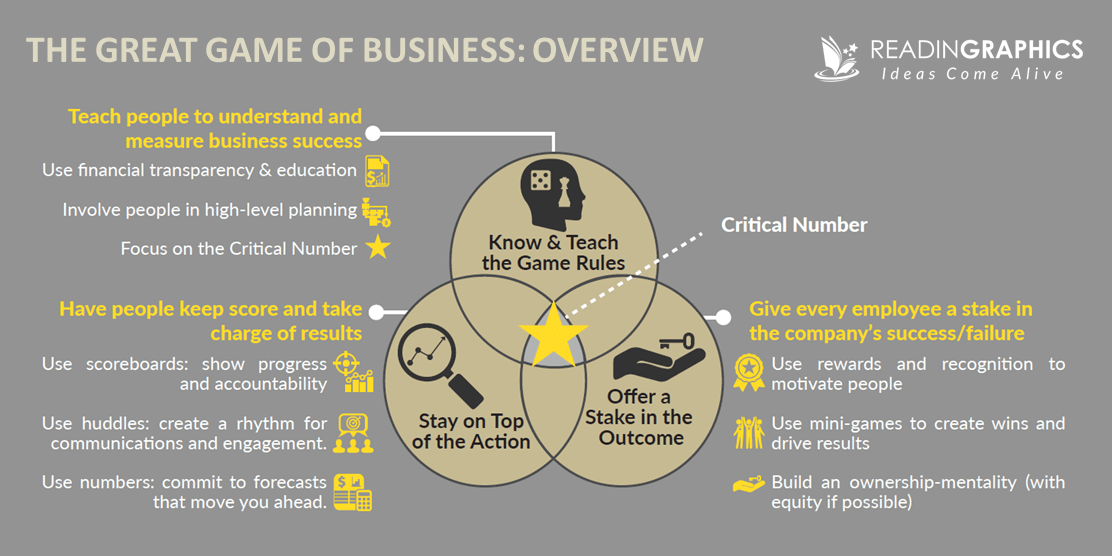Keeping Score: How to Improve Performance and Power Strategic Execution with Critical Numbers
The Power of Data
The defining business trend of the past decade is the dramatic rise of the importance of data. A quick assessment of the largest public companies by market cap reveals that data has passed natural or consumer resources to become the critical factor in determining a company’s value. Keeping track of your company’s critical numbers will only become more important in the next decade.
|
Market Cap Rank |
2009 |
2019 (Present) |
|
1. |
PetroChina |
Apple |
|
2. |
Exxon Mobile |
Microsoft |
|
3. |
Microsoft |
Amazon.com |
|
4. |
Industrial and Commercial Bank of China |
|
|
5. |
Wal-Mart |
Alphabet, Inc. |
Source: Wikipedia
This trend has impacted the way companies run their own businesses, enabling more insightful business intelligence, more agile processes, and better-informed strategy. One may safely assume that the importance of data for business leaders will continue to trend higher in the coming decade.
The Scoreboard for the Game of Business
We took a deep dive on this topic in our most recent webinar with Neale Lewis, CEO of Neale Lewis Associates and a Scaling Up certified coach. Neale has over ten years of experience helping businesses improve their strategy with the right data and growth tools.
Having worked with numerous scaling businesses as a coach, Neale firmly believes in the importance of keeping track of “Critical Numbers”, a select set of key performance indicators in your business.
Taking from the story of Jack Stack at SRC and The Great Game of Business, Neale advocates treating your business like a game, albeit one with more serious consequences.
Like a game, business has 4 main components, without which the game wouldn’t be worth playing:
- There is a goal
- There are rules
- There is a scoreboard
- There is a reward for winning
The goal may be profits, sales, or better employee engagement. These are your company’s priorities, rocks, or objectives. Call them whatever you will, these main goals must be known by everyone in the company. It isn’t fun to play a game when you don’t know what the objective is.
The rules of business are typically specific to your industry, company, and even region. Internally, these rules are defined by the habits and values that define your organization’s culture. Keeping these rules visible in your organization is not just important for hitting goals, but also for maintaining engagement and a positive culture.
The scoreboard is not just profit and loss statements, but the Key Performance Indicators (KPIs) that drives your business’s success. Playing a game without knowing the score would be frustrating and pointless, yet many businesses keep performance metrics spread across different systems with restricted access. Neale shared examples of monitors, whiteboards, and even artwork of actual scoreboards and playing fields that sit right where employees work, so they can always know what the score is.
Finally, the reward for winning makes up the primary purpose of playing the game. Unlike some other games, businesses serve a purpose. Giving employees a stake in the company’s success is critical for team motivation and aligning of company and individual goals.
When these four criteria are met, every employee at your company should be engaged and motivated.
Choosing the Critical Numbers
Because not every KPI can fit on the typical scoreboard, selecting a small number of the most critical leading indicators becomes central to utilizing data to power execution. Just as success in baseball or soccer can be measured by many different statistics (see Moneyball), goals for and goals against hold an especially critical position.
Neale references three critical factors to think about when making your critical numbers come alive in your organization.
Educate
Firstly, critical numbers help contributors keep score and take charge of results. A scoreboard allows them to see progress in real-time and understand their contributions creating accountability. Daily huddles or monthly priority update meetings create communication rhythms that allow information relevant to critical number progress travel across the organization and keep employees engaged.
Enable
Secondly, critical numbers require that every member of your team “know and learn the rules”, by understanding and seeing measurement of the company’s performance. Enabling entails not only knowing the critical number in real-time, but also understanding how it drives the business forward. It means involving every individual in high-level planning and transparency around how their efforts affect the critical number and thereby overall success.
Engage
Finally, critical numbers should be tied to rewards and recognition to create motivation and drive results. Choosing a quarterly theme, with a celebration and a catchy theme tied to achieving key results, can increase engagement in these efforts. When employees feel ownership and responsibility for the results, especially when financial incentives are present, engagement and performance will soar.

The rest of Neale’s valuable webinar can be streamed below.
If you would like to learn more about a technology proven to increase engagement and performance using the critical number and goal tracking, schedule a demo of Align today!





